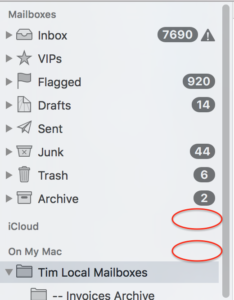Is Comcast, aka Xfinity, your Internet Service Provider (ISP)? If so, you should be aware that starting November 1, 2016 they’ll be implementing monthly data caps in some cities. You can get the full details in this Business Insider article about Comcast. In a previous Tech Tip I wrote about Comcast implementing and then removing monthly data caps. Comcast is again implementing data caps but the cap is currently quite generous for most people. Comcast permits 1 Terabyte of data per month. 1 TB equal 1000 GB of data. (If you’re unclear about all of these terms, please refer to my How Big Is A Kilobyte article.)
A Terabyte of data is a very large amount of data, at least by today’s standards. Comcast lists what you can do with 1 Terabyte of data, if you’d like some concrete examples. Comcast also offers their customers the ability to monitor their monthly data usage. They also offer a tool for estimating data usage. I’ll mention that my average monthly usage for the past few months has about around 260 GB. Thus, I’m not overly concerned about a cap of 1 Terabyte per month but this is a change of policy since Comcast didn’t have monthly caps for many years. As video and music streaming services become increasingly common and software is most commonly bought online, we should all be aware of how much data we use each month and about data caps implemented by our ISPs.

 If so, there’s likely an easy fix. Apple added a Show/Hide button to Apple Mail. I believe they added it to Mail starting with OS X Lion (aka OS X 10.7). This button can be used to either show your mail folders or to hide them. This button can be quite vexing because this button is not visible all of the time. In fact, it’s invisible by default. It only becomes visible when you move your cursor on top of it. The red ovals in the image to the right show where this Show/Hide button is located.
If so, there’s likely an easy fix. Apple added a Show/Hide button to Apple Mail. I believe they added it to Mail starting with OS X Lion (aka OS X 10.7). This button can be used to either show your mail folders or to hide them. This button can be quite vexing because this button is not visible all of the time. In fact, it’s invisible by default. It only becomes visible when you move your cursor on top of it. The red ovals in the image to the right show where this Show/Hide button is located.